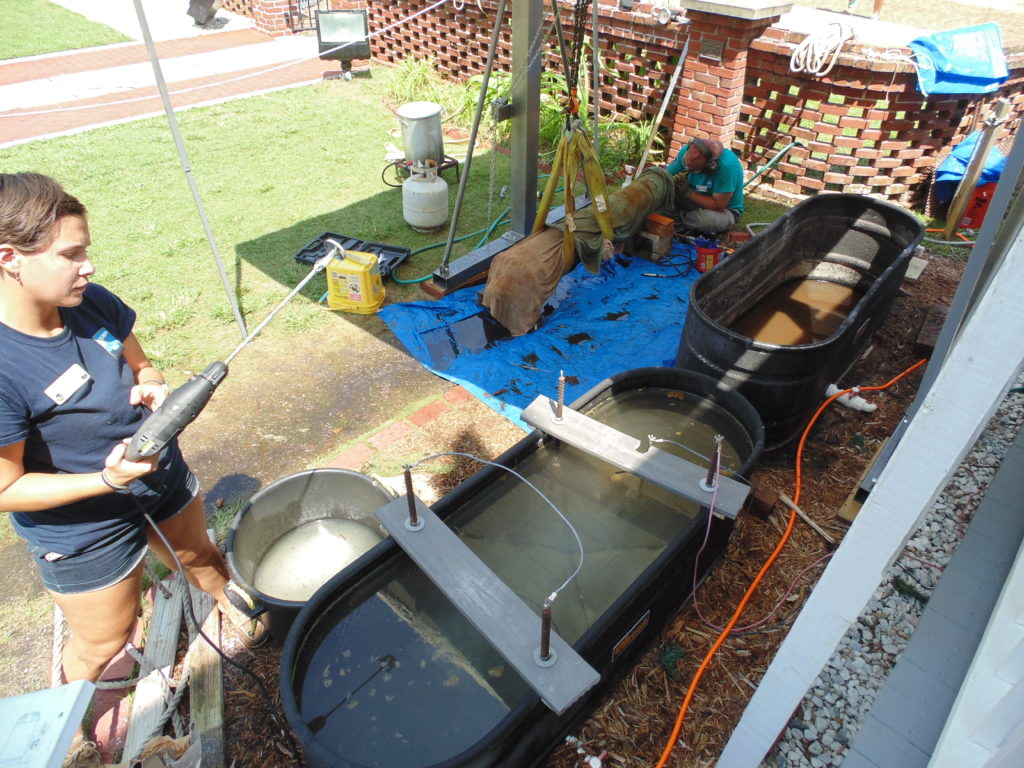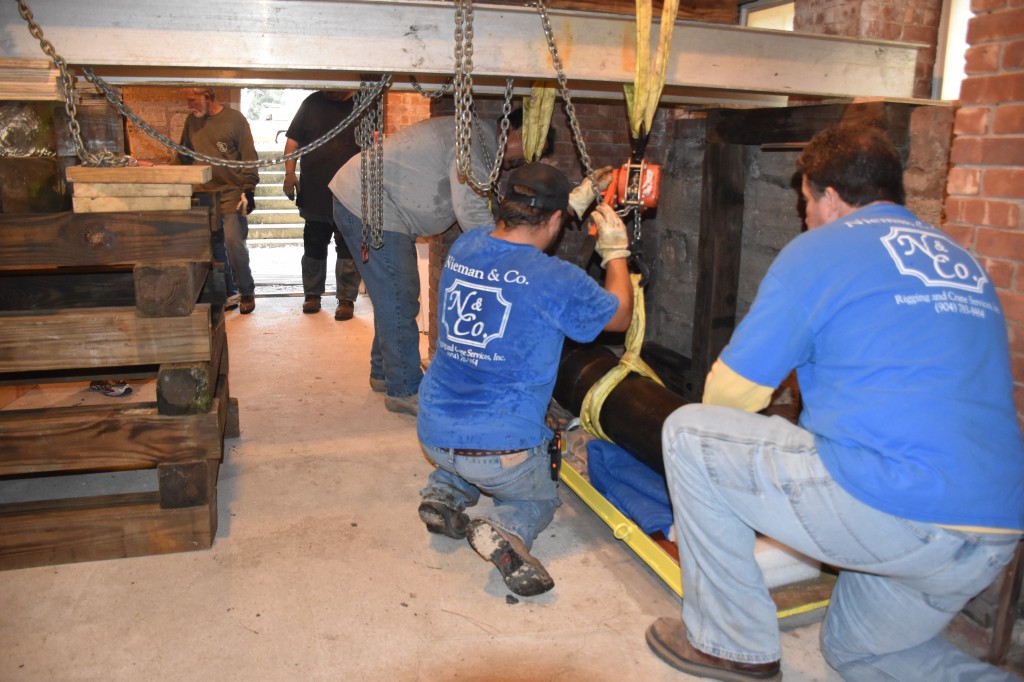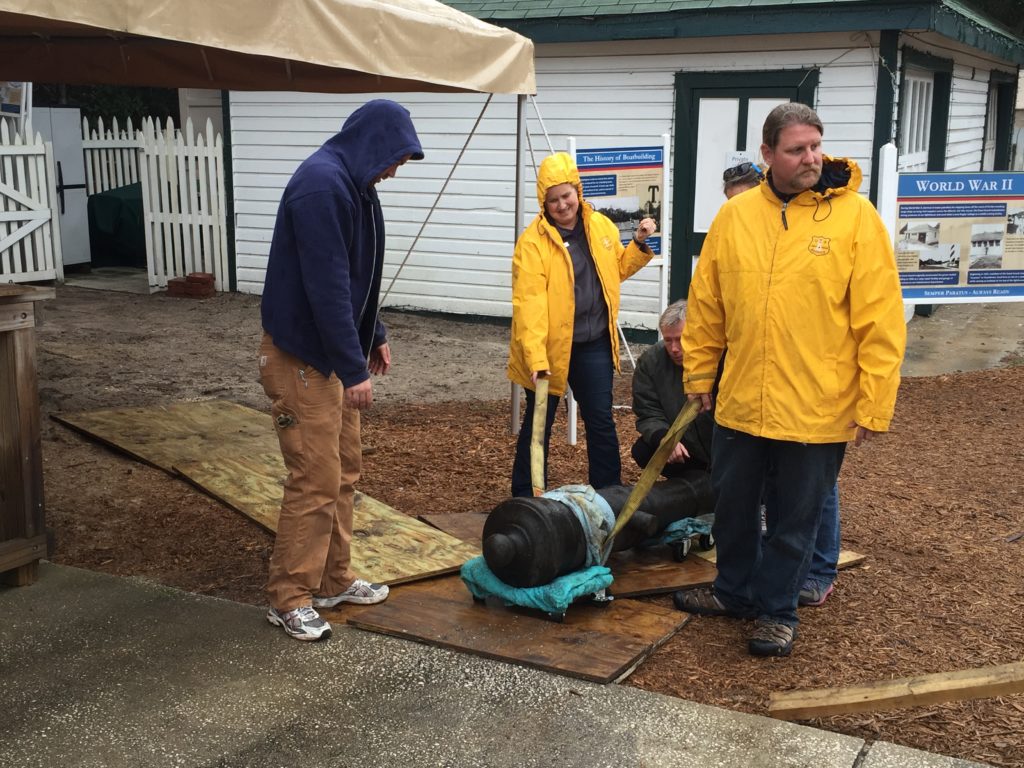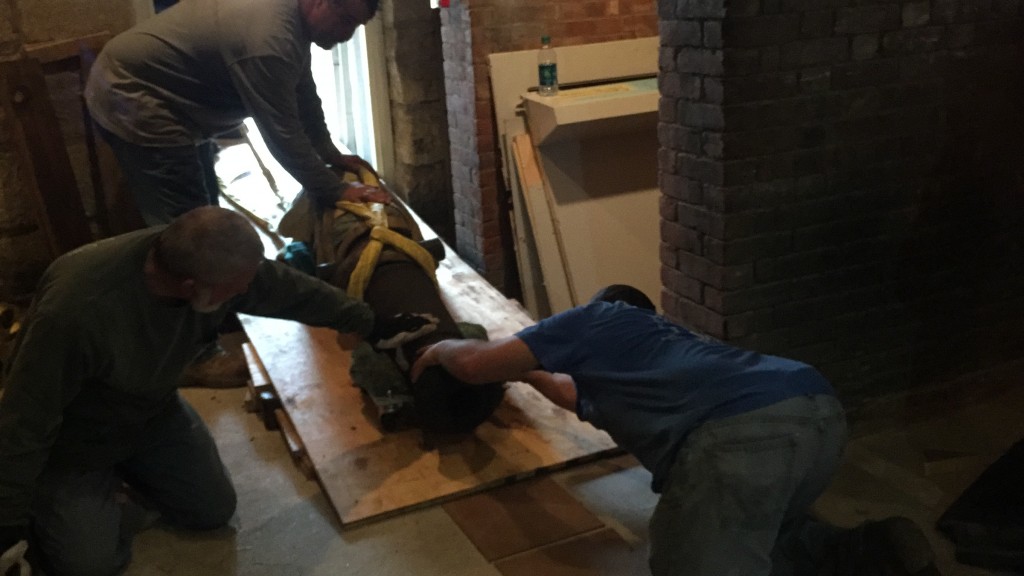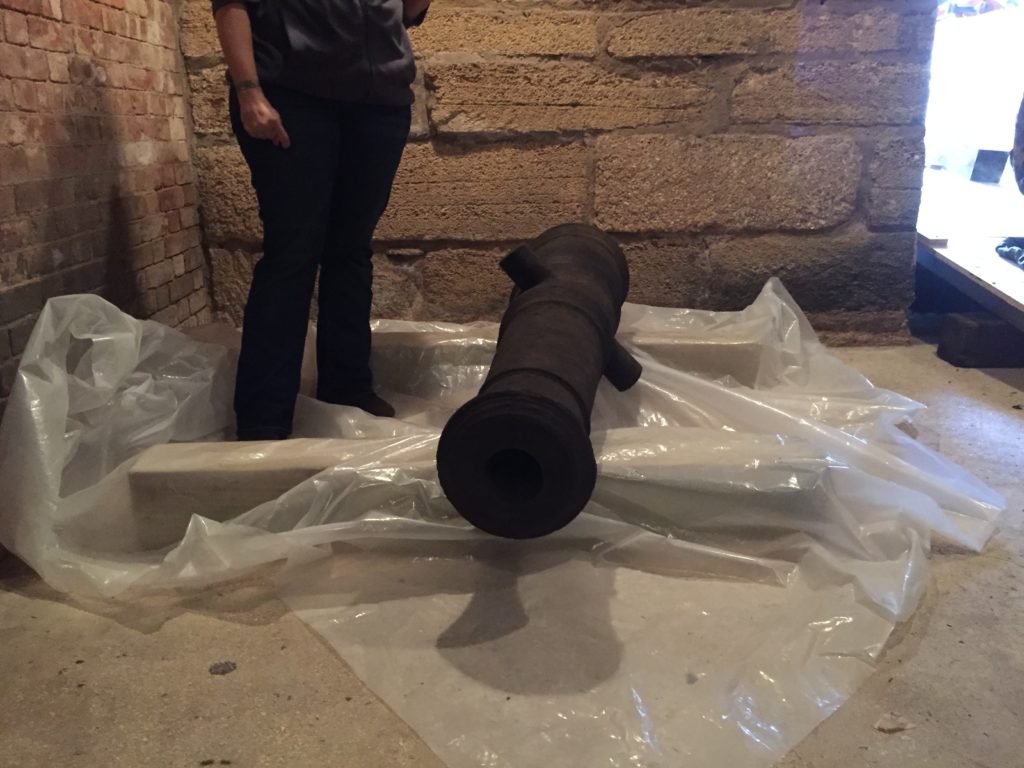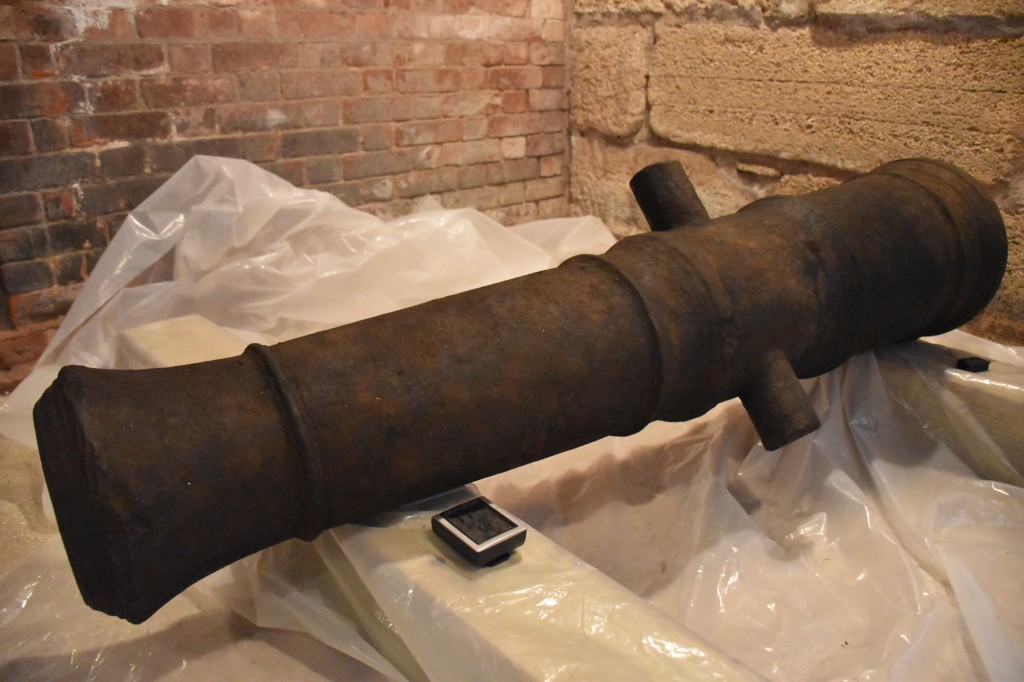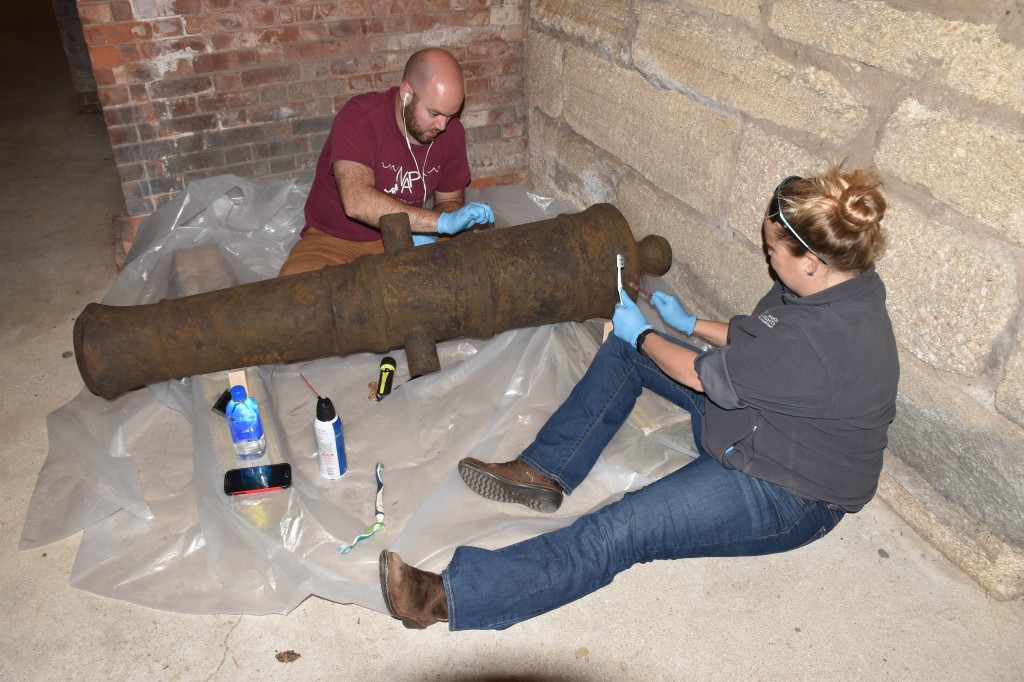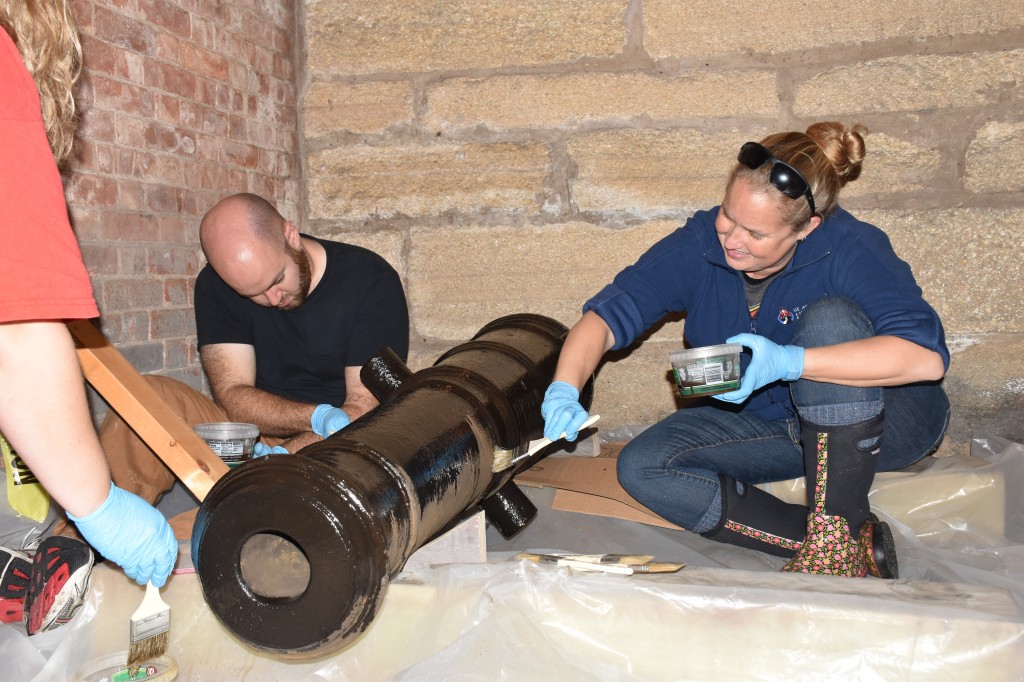The Keeper’s House at the St. Augustine Lighthouse & Maritime Museum is currently undergoing a big change. This spring will see the opening of a new, large exhibit focusing on the underwater archaeology conducted by the Lighthouse Archaeological Maritime Program staff. The new exhibit, called Wrecked!, will explain the process of finding, excavating, researching and conserving the 1782 British Loyalist shipwreck (known sometimes at the Storm Wreck) as well as displaying the numerous artifacts from the site.
The largest finds from Storm are the two cannons, which visitors may have seen outside the house for the previous four years. The 4-pound long gun and the 9-pound carronade have finished the electrolysis stage of the conservation process and are now going through the final and penultimate steps, respectively.
However, before we could do anything further with the Storm guns, we had to make room for them. This coincides with the new exhibit and meant that the Lighthouse would need to move out the old Industry wreck exhibit in the basement. While most of the artifacts were easily packed up and taken care of by our Collections staff, there was one object that was a little more than the Lighthouse was comfortable handling.
The old cannon from the Industry site was nearly twice the size and weight of the 4-pound long gun from Storm. Professional movers Nieman & Co. were hired to get the 2000 pound gun out of the basement and into the front foyer of the visitor center.
After the Industry cannon was moved, it was the Lighthouse staff’s turn to wheel artillery into place. The 4-pounder was taken out of the hot-water rinsing container, allowed to dry and cool and carefully placed onto wheeled moving dollies. The gun was then gently pushed from behind the garage into the courtyard.
Again, Nieman & Co. helped to stabilize and lower the gun into the basement using their ramps and winches. When finally inside the Keeper’s House, the cannon was then moved on to wood blocks to help facilitate the last necessary part of conserving marine artifacts.
The final step for active conservation of the 4-pound gun is to seal the surface of the metal and prevent any further corrosion. Most often, this is done by applying tannic acid in three applications over a 24 hour period. The tannic acid acts as a rust inhibitor and soaks into the outer layers of the cast iron and is then painted over. There are a handful of advantages to using tannic acid and paint, namely the cost and ease of application. However, in order to do it properly, the first coat of tannic acid must be applied while the artifact is still hot from the heated water rinse. Because of safety and space concerns, as well as the mess potential of tannic acid, we chose to go another route.
Starr Cox, Director of Archaeological Conservation, decided to use a product called Owatrol Marine Oil. Instead of three coats of tannic acid, followed by an exterior paint, we could simply just use the Owatrol. The oil penetrates the surface of the cast iron and inhibits corrosion, but also sets up and cures and blocks the surface from exposure to the atmosphere. A big advantage of the oil is that the gun does not need to be hot or worked on immediately. The cannon only needs to be completely dry. This is why we moved the gun down into the basement, in order to take advantage of the climate-controlled area closed to the public.
After a few coatings of the oil, the cannon will be protected from the atmosphere and stable enough to move into its new home among the Wrecked! exhibit.
Andrew Thomson is the Assistant Conservator for the St. Augustine Lighthouse & Maritime Museum. He received his graduate degree and training from the Conservation Research Laboratory at Texas A&M.


